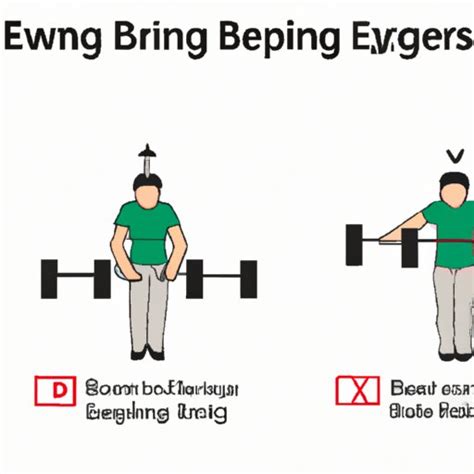Intro
Discover weight bearing exercises benefits, including strengthened bones, improved balance, and enhanced muscle tone, through activities like walking, running, and strength training, boosting overall health and reducing injury risk.
Regular physical activity is essential for maintaining overall health and well-being. Among the various forms of exercise, weight-bearing exercises have gained significant attention due to their numerous benefits. Weight-bearing exercises are activities that make your muscles work against gravity, which helps to strengthen your bones and muscles. These exercises are crucial for building strong bones, preventing osteoporosis, and reducing the risk of fractures. In this article, we will delve into the benefits of weight-bearing exercises and explore how they can improve your overall health.
Engaging in weight-bearing exercises can have a significant impact on your bone density. As you perform these exercises, your bones adapt to the stress and weight by becoming stronger and denser. This is especially important for older adults, as it can help prevent osteoporosis and reduce the risk of fractures. Weight-bearing exercises can also improve your muscle mass and strength, which can enhance your overall physical function and mobility. Furthermore, these exercises can help with weight management, as they can increase your metabolism and burn calories more efficiently.
In addition to the physical benefits, weight-bearing exercises can also have a positive impact on your mental health. Exercise has been shown to reduce stress and anxiety, improve mood, and even alleviate symptoms of depression. Weight-bearing exercises, in particular, can provide a sense of accomplishment and confidence, as you challenge yourself to perform physical activities that require strength and endurance. With the numerous benefits of weight-bearing exercises, it's essential to incorporate them into your daily routine. Whether you're a beginner or an experienced athlete, there are various weight-bearing exercises that can suit your needs and fitness level.
What are Weight-Bearing Exercises?

Types of Weight-Bearing Exercises
Weight-bearing exercises can be further divided into various types, including aerobic exercises, strength training exercises, and flexibility exercises. Aerobic exercises, such as walking and cycling, are designed to improve your cardiovascular health and increase your endurance. Strength training exercises, such as weightlifting and bodyweight exercises, are designed to build muscle mass and strength. Flexibility exercises, such as stretching and yoga, are designed to improve your flexibility and range of motion.Benefits of Weight-Bearing Exercises

How to Incorporate Weight-Bearing Exercises into Your Routine
Incorporating weight-bearing exercises into your daily routine can be simple and convenient. Here are some tips to get you started: * Start with low-impact exercises: If you're new to weight-bearing exercises, start with low-impact activities such as walking or swimming. * Gradually increase intensity: As you become more comfortable with weight-bearing exercises, gradually increase the intensity and duration of your workouts. * Incorporate strength training: Strength training exercises, such as weightlifting and bodyweight exercises, can help build muscle mass and strength. * Find activities you enjoy: Engage in weight-bearing exercises that you enjoy, such as dancing or hiking, to make physical activity a fun and sustainable part of your lifestyle.Examples of Weight-Bearing Exercises

Tips for Performing Weight-Bearing Exercises Safely
When performing weight-bearing exercises, it's essential to prioritize safety and injury prevention. Here are some tips to help you get started: * Warm up and cool down: Always warm up before starting your workout and cool down afterwards to prevent injury and reduce muscle soreness. * Listen to your body: If you experience pain or discomfort, stop the exercise immediately and rest. * Use proper form: Use proper form and technique when performing weight-bearing exercises to prevent injury and ensure effectiveness. * Start slow: Gradually increase the intensity and duration of your workouts to avoid injury and prevent burnout.Common Mistakes to Avoid When Performing Weight-Bearing Exercises

How to Overcome Common Challenges When Performing Weight-Bearing Exercises
When performing weight-bearing exercises, you may encounter several challenges that can make it difficult to stick to your routine. Here are some tips to help you overcome common challenges: * Find a workout buddy: Exercising with a friend or family member can help you stay motivated and accountable. * Track your progress: Tracking your progress can help you stay motivated and see the results of your hard work. * Mix up your routine: Varying your exercise routine can help prevent boredom and keep your workouts interesting. * Seek professional help: If you're struggling to establish a consistent exercise routine or experiencing pain or discomfort, consider seeking help from a fitness professional.Conclusion and Next Steps

Final Thoughts and Recommendations
As you embark on your weight-bearing exercise journey, remember to stay motivated, track your progress, and seek help when needed. With the numerous benefits of weight-bearing exercises, it's essential to make them a sustainable part of your lifestyle. Whether you're a beginner or an experienced athlete, there are various weight-bearing exercises that can suit your needs and fitness level. So, get started today and experience the numerous benefits of weight-bearing exercises for yourself.What are the benefits of weight-bearing exercises?
+Weight-bearing exercises can help improve bone density, increase muscle mass and strength, and enhance overall physical function. They can also help with weight management, improve mental health, and reduce the risk of chronic diseases.
What are some examples of weight-bearing exercises?
+Examples of weight-bearing exercises include walking, running, jumping, weightlifting, and bodyweight exercises such as push-ups and squats.
How often should I perform weight-bearing exercises?
+The frequency and duration of weight-bearing exercises depend on your fitness level and goals. It's recommended to perform weight-bearing exercises at least 2-3 times per week, with a minimum of 30 minutes per session.
Can weight-bearing exercises help with weight loss?
+Yes, weight-bearing exercises can help with weight loss by increasing your metabolism and burning calories more efficiently. However, it's essential to combine weight-bearing exercises with a healthy diet and lifestyle to achieve sustainable weight loss.
Are weight-bearing exercises suitable for everyone?
+Weight-bearing exercises can be modified to suit different fitness levels and needs. However, it's essential to consult with a healthcare professional or fitness expert before starting any new exercise routine, especially if you have any underlying health conditions or concerns.
We hope this article has provided you with a comprehensive understanding of the benefits and importance of weight-bearing exercises. If you have any further questions or comments, please don't hesitate to share them below. Remember to stay active, motivated, and patient, and you'll be on your way to achieving your fitness goals and maintaining a healthy, active lifestyle. Share this article with your friends and family to help them get started on their weight-bearing exercise journey. Together, let's prioritize our health and well-being and make physical activity a fun and sustainable part of our lives.
